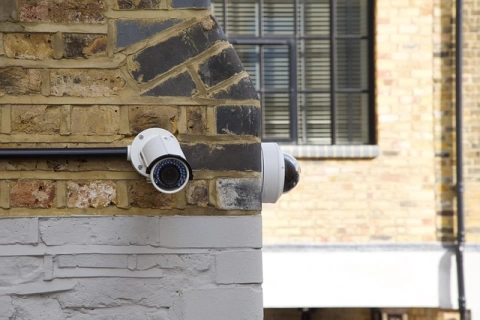On-Page SEO: What Is It, And Why Would You Need It?
On-page SEO refers to optimizing your website for search engine ranking. Are you a website owner looking for ways to increase your search rank and make it easier for visitors to find you? This article will teach you how on-page SEO works, the benefits it can provide, how to get started with on-page SEO, and more.
What Is On-Page SEO?
On-page SEO is the practice of improving the ranking of a website in search engines. Ranking well in search engines means that your website is more likely to be found by potential customers, leading to increased traffic and revenue. Your website must be optimized for Google, Yahoo!, Bing, and other search engine algorithms.
Several factors go into optimizing a website for search engine indexing. Still, the main goal is to improve the site's visibility, thus its chance of being clicked on by potential customers. The following are some of the most important elements of on-page SEO:
1) Title Tag: The title tag is the first thing that appears in a browser when someone types in a web address. It's essential that your title tags accurately reflect the content on your website. This is done by hyphenating keywords and adding a keyword or phrase that makes people want to click on the link. For example, if you're selling a couch, you could use "buy furniture online" as a tag or "online furniture store". Your website title should not exceed 60 characters in length. Google crawler does not read/crawl title text beyond 60 chars. Another thing that you need to remember is that title should be relevant to website page content.
If you want to which website is using a particular title then use the below search term in the google search
e.g. allintitle: mobile app developer in India
In the above example "mobile app developer in India" is the title you want to check. In search Google show you which websites are using this search term as a title.
2) Meta Description: This is how your title tag is described. It will be used by search engine spiders and other users when they are looking for information on your site, so it must accurately describe the website's content. The prescribed meta length by google is 155 characters. So the length of your meta description should not exceed the length suggested by Google.
3) Keywords: You should utilize at least 10 – 15 keywords in your title tag and meta description to ensure that it appears high in search results for relevant terms.
4) Alt Tags: The user uses the Alt tags to change images on a page. The Alt tag is a crucial help tag that will direct visitors to your site, but it is also essential that the photo you select looks good and is relevant to your content. Web admins often overlook these alt tags and no longer need to be included in your HTML code.
5) Headings: Using headings makes your title tags appear better than just text. They give search engine spiders a sense of importance or relevance since they will use them as part of the natural order in which the pages are displayed for users.
6) URL Prepending: This needs to be done before you include any other coding like meta description and keywords, as this will ensure that links appear in the right place. Either prefixing or prepending helps search engines to understand where links are pointing.
7) Images: You must focus on the quality of your images and maintain them in a well-presented way at all times. This is because it helps people see the site, whether in terms of color schemes and design or content.
8) Content: If you want your website to do well, make sure that you keep the content up-to-date. This will ensure that those who visit regularly come back for more great articles and information about the topics covered by your website.
9) Attribute Links: These help readers find specific pages even if they have already read through everything you have written. Attribute links are available in the footer of your website, and there is a button for them located at the bottom of every page, under the logo.
10) Optimize Your Site: Make sure that you optimize your site with all the best techniques available to get as much traffic as possible.
What Does On-Page SEO Mean?
On-page SEO is optimizing your website for search engine indexing by improving the appearance and quality of your website's written content. The goal is to make your site as attractive to potential customers as possible to find what they're looking for without having to sift through irrelevant results.
There are a few things you can do to improve your website's on-page SEO:
• Write meaningful, keyword-rich titles and meta descriptions that accurately reflect your content
• Optimize your images for size, file type (JPG, PNG, GIF), and keyword density
Some tips for optimizing your website for search engine indexing include using Title tags, H1 tags, and ALT attributes to identify essential keywords in your text and using canonical tags to ensure that all of your pages reference the same version of a document across the web.
Types of On-Page SEO
On-Page SEO is improving the visibility and ranking of your website's pages on search engines. There are many different ways to do this, but optimizing your title tags, meta descriptions, and other page content is the most common.
Title Tags: Your website's title tag is what appears on the search engine results page (SERP) when someone queries a specific phrase or keyword. It should be a catchy and attention-grabbing phrase that accurately reflects your site's content. For example, if you sell shoes, your title tag might be "Sale Furniture | Save Up To 40% on Brands."
Meta Descriptions: Your meta description is what appears below the title tag on your SERP. It should be a brief description of your site that explains what it is and why someone would want to visit it. For example, if you sell shoes, your meta description might read, "Find designer shoes for less at discount prices."
Page Titles: Your page titles are the text that appears under the title tag on your site's pages. Your page title should be an essential phrase that describes the content of your website and tells someone what to do next. It should also be slightly different from your page titles on every page so that they can be long and descriptive in length.
Widget Titles: Your widget titles appear when people visit a specific widget or add-on on your site. They are often very short and include a call-to-action button, such as "FREE Shipping!" You can use this space to provide more information about what visitors will receive if they click the button, how it works, or any other vital points associated with your product or service.
Conclusion
On-page SEO (short for "search engine optimization") is the practice of making your website as easy to find and use as possible by optimizing it for search engines. This can be done through things like adding keywords to your content, using effective title tags and meta descriptions, and creating a site layout that is user-friendly. This will make your site easier to find on search engines, but it will also improve your chances of attracting high-quality traffic in the first place. So if you're looking to boost your website's visibility and get more people clicking through to see what you have to offer, improving your on-page SEO may well be the way to go.















Send Query